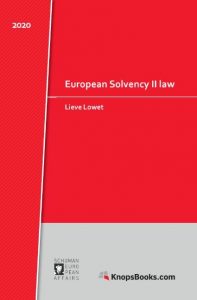In the light of the Solvency II review, one question is whether pandemic risk is adequately dealt with in the solvency capital requirements for insurers and reinsurers. Are the technical elements in the life and health underwriting risk modules still in line with the (new) insights and observations of a worldwide pandemic, such as COVID-19? And if not, is an adaptation necessary? Are additional parameters required? What about the impact on other business lines especially in non-life insurance? Quid liquidity risk?
by Lieve Lowet
How is pandemic risk included in today’s Solvency II framework? The Solvency II framework lays down the principles which steer the capital requirements of insurers and reinsurers. In the end, consumers and businesses want to be paid when a risk occurs. So insurers and reinsurers need to hold capital for the risk they underwrite, the assets they invest in, the counterparty they reinsure with, the operations such as IT systems they use to manage all the above.
Pandemic risk is included in the European Solvency II framework as a submodule of life underwriting risk for death rates beyond the normal mortality rate. Beyond the normal means an instantaneous increase of 0.15 percentage points to the mortality rates used in the calculation of the technical provisions to reflect the mortality experience in the next 12 months (Article 143 the Delegated Regulation (EU) 2015/35, hereafter DEA).
Besides the life catastrophic risk submodule there is also a health catastrophic risk module (Article 160 DEA) which includes pandemic risk submodule (Article 163 DEA).
In addition to the health and life catastrophe risk (sub)modules, catastrophe risks are considered in the non-life underwriting risk module, including premium and reserve risk. But closer examination reveals that there does not seem to be a systematic inclusion of pandemic risk in each non-life line of business (LOB). There is for example no pandemic underwriting risk coverage in the fire and other damage to property insurance LOB. Is that not the LOB in which the claims regarding non-damage business interruption are a cause for major concern?
Pandemic risk is also presumed to be considered in operational risk which includes the occurrence of external events. Legal risk is part of operational risk, including compliance and legal environment risk, to the extent it is not already reflected in the other risk modules.
In case European and national policymakers, supervisors, industry, consumers and other stakeholders alike are of the opinion that this field requires rethinking; i.e. whether pandemic risk is properly captured and whether it matters for each line of business, potential further questions are:
- In case pandemic risk is currently part of the framework, are there new insights which suggest further fine tuning of the existing underwriting risk framework for certain LOBs?
- Should pandemic risk be included in underwriting risk beyond the current LOBs?
- And if yes, where? Should there be a limit? Should that limit be defined EU wide?
But above all, the impact hitherto stretches beyond the risk categories that were considered relevant for a pandemic situation when Solvency II was developed more than 10 years ago. From what we observe today, a pandemic, such as COVID-19, has the potential to impact more than only underwriting and operational risks. This has come as a surprise. The pandemic has impacted financial markets and its consequences stretch beyond underwriting and operational risks into market risk, credit risk, and liquidity risk. Should the standard formula risk modules be adapted for the new insights obtained from this stressed environment also in the market, credit, and liquidity risk categories? Just like The Wrestlers (Les Lutteurs) by Jef Lambeaux, we will have to grapple with these questions in the near future.
This article was part of a series of articles about my investigation into Covid-19 and Solvency II. It was first published on the Risk & Compliance Platform Europe. Read it here.
|
The author, Lieve Lowet, has a long experience as EU Affairs consultant and lobbyist. She focuses on European dossiers relevant for the insurance and pension sector and has been involved in the Solvency II project since its early stages. From 2003 to 2008, she was Secretary-General for the international mutual insurance association AISAM (now AMICE), which accounted for 15% of the European and 6% of the world insurance market. Prior, she worked for McKinsey as a European banking and insurance expert. |
Lieve Lowet is also the author of the 2020 edition of the European Solvency II law book (KnopsPublishing). This fully revised fourth edition includes the complete Solvency II legislation updated for all amendments till May 2020. It includes also the coordinated EIOPA Regulation and the recent Regulation on Sustainability‐related Disclosures in the financial services sector.
View the table of contents here or order your copy now.





0 commentaires